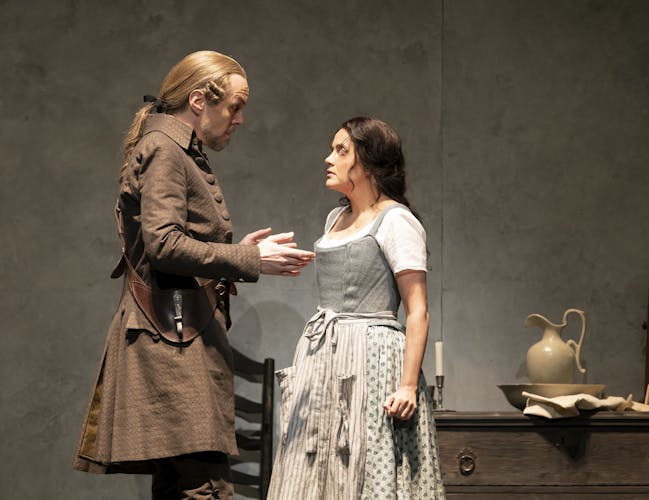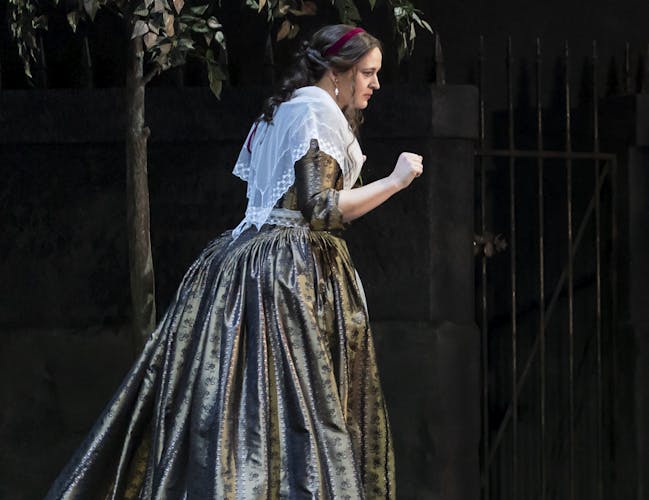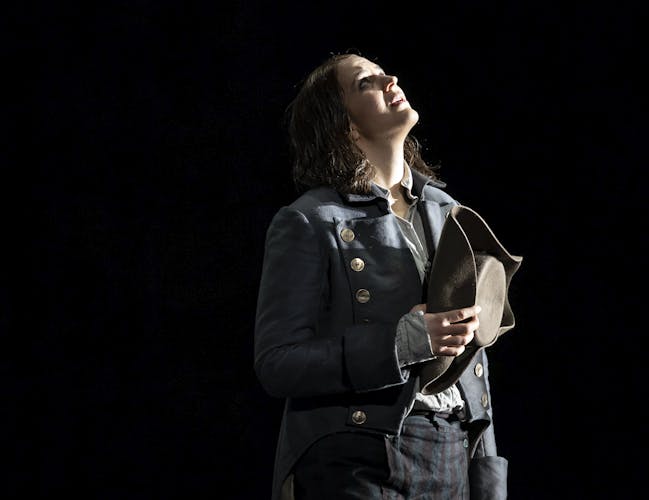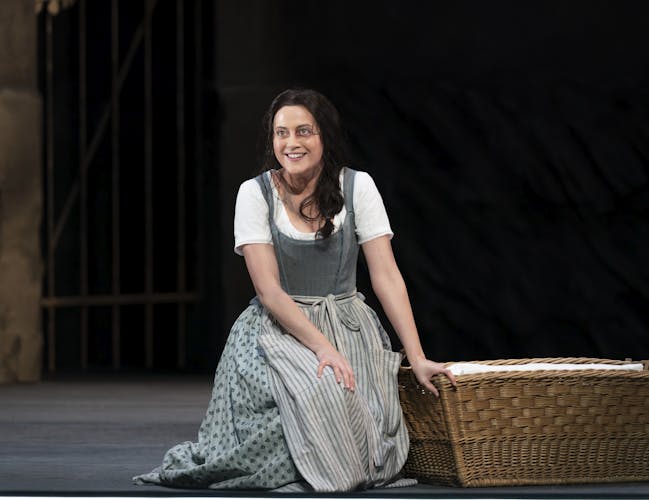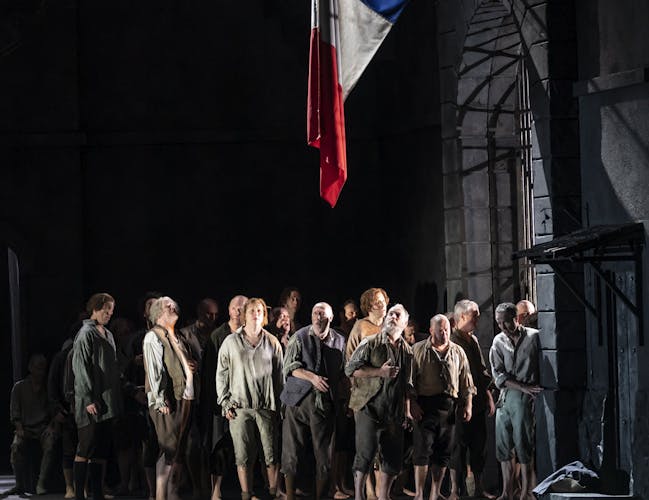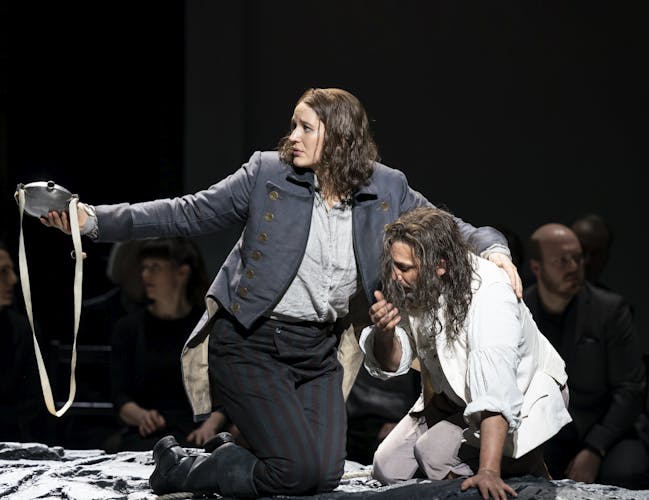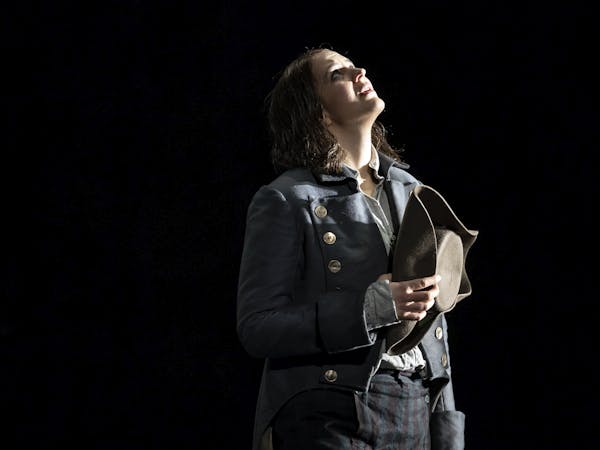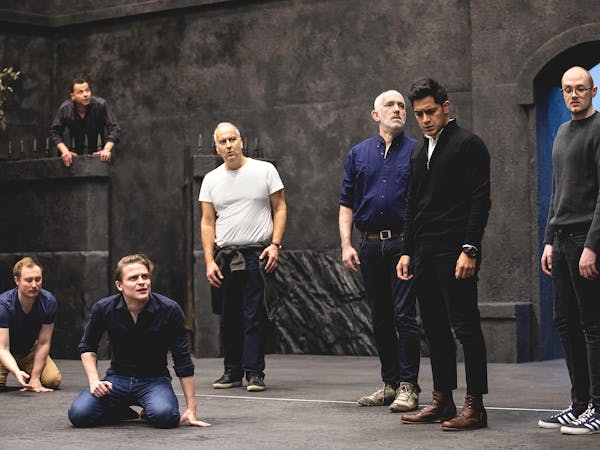Fidelio
Our quick guide to Beethoven's only opera.
What begins as a domestic drama turns into a bold exploration of freedom, gender and the power of love. Resistance, revolution and love against the odds in Beethoven’s only opera.
Quick facts
What is Fidelio about?
In Fidelio, a young woman, Leonore, embarks on a daring mission to rescue her husband, who has been wrongly imprisoned. Disguised as 'Fidelio', she sneaks into the jail as a prison guard. But as time begins to run out – and the jailer’s daughter falls in love with her – Fidelio’s hidden identity and her husband’s fate are put in sudden peril.
How long is the opera Fidelio?
The performance lasts about 2 hours 35 minutes, including one interval lasting 30 minutes. Act I lasts for 1 hour and 15 minutes and Act II lasts for 50 minutes.
Is Fidelio a true story?
Beethoven based his opera on a play called Léonore written in 1793 by Jean-Nicolas Bouilly . That play was allegedly inspired by a real-life Revolutionary prison rescue that took place in the city of Tours.
Who composed Fidelio?
Fidelio was composed by Ludwig van Beethoven. It is his only opera and was composed at a similar time to his 'Eroica' Symphony in the early 1800s. The original libretto was written by Joseph von Sonnleithner with edits made shortly after by Stephan von Breuning and Georg Friedrich Treitschke.
To find exclusive souvenirs and gifts inspired by Beethoven's opera: explore the Fidelio collection at the Royal Ballet and Opera Shop.
History
The one and only
The first version of Fidelio was performed on 20 November 1805 at the Theater an der Wien in Vienna. A second version of Fidelio was presented four months later in March 1806, but Beethoven withdrew it after just two performances. It wasn't until 1814 (eight years later) that audiences first heard the final version at the Kärtnertortheater in Vienna on 23 May. Among over 700 works, Fidelio was Beethoven's only opera. He wrote that although ‘it is the work that brought me the most sorrow, for that reason it is the one most dear to me.'
A nearly 200 year history
Fidelio was first performed at Covent Garden in 1835 at which it was sung in English. In 1851 it was brought back to Covent Garden by the Royal Italian Opera, this time sung in Italian, and was revived may times until 1914. In 1948 The Royal Opera (then the Covent Garden Opera Company) returned to singing the English translation and even used the pre-war sets that had been created by Rex Whistler.
Since then, Fidelio has returned several times through several productions; Otto Klemperer's production (sung in German) in 1961 and 1983, Andrei Șerban's production in 1986 and 1987, Adolf Dresen's production from 1990 to 1993, Jürgen Flimm's production came from the Metropolitan Opera to the Royal Opera House in 2007 and was revived in 2011. The latest production – by Tobias Kratzer – was first staged in March 2020 and marked the 250th anniversary of Beethoven's birth. The run of performances was forced to end early owing to the pandemic.
Synopsis
- Florestan: A political prisoner
- Leonore: Fidelio's wife who vows to save him from prison under the guise of 'Fidelio'
- Rocco: The gaoler
- Marzelline: The gaoler's daughter who falls for 'Fidelio'
- Jaquino: The gaoler's assistant
- Don Pizarro: Governor of the prison
- Don Fernando: The King's minister
Beethoven’s Fidelio falls into two unequal halves. Act I is a historical melodrama on freedom and love in the post-Revolutionary era. Act II is a political essay on the responsibility of the individual in the face of a silent majority, a musical plea for active empathy.
A PRISON COURTYARD
Marzelline, the daughter of prison director Rocco, attempts to ward off the advances of the young gatekeeper Jaquino (Jetzt, Schätzchen, jetzt sind wir allein). The two young people used to be a couple, but now she only has eyes for the new prison guard Fidelio, with whom she secretly dreams of a joint future (O wär’ ich schon mit dir vereint). What Marzelline little suspects is that Fidelio is in fact a noblewoman named Leonore, disguised as a man in order to search the prison for her vanished husband, Florestan. Leonore, Marzelline, Jaquino and Rocco indulge in wholly contrary hopes for the future (Mir ist so wunderbar).
Nor does Rocco suspect Fidelio’s true identity. He would like his new employee to be his future son-in-law and gives him a lesson in pragmatism (Hat man nicht auch Gold beineben). Marzelline tries to get closer to Fidelio, who, however, only hopes for a favour from Rocco: a visit down to the prison’s dungeon, where Florestan is presumably being held (Gut, Söhnchen, gut, hab immer Mut).
The arrival of the governor Don Pizarro is announced (March). Pizarro, formerly Florestan’s close friend, has been transformed by political circumstances into his bitterest foe and is responsible for Florestan’s secret imprisonment. Awaiting a prison inspection by the minister, he resolves to kill Florestan before his whereabouts can be discovered (Ha! Welch ein Augenblick). Pizarro instructs Rocco to prepare for the illegal execution and in return promises a rich reward. Rocco is torn between pity and obedience (Jetzt, Alter, jetzt hat es Eile!).
Leonore, too, sees herself forced into action by Pizarro’s plans. Terrified, she recalls her love for Florestan and her inner determination (Abscheulicher! Wo eilst du hin?). As her first act of human sympathy she persuades Rocco to allow the prisoners to spend a brief moment of happiness in the fresh air (O welche Lust, in freier Luft). Pizarro is outraged, but grants Rocco’s request to take Fidelio as his assistant into the dungeon where Florestan lies in chains. Together, Leonore and Rocco begin their descent into the secret chamber.
A DUNGEON
Florestan feels nothing but darkness and silence. He is denied any form of help. Only the thought of Leonore allows him to maintain his faith in God and Man (Gott! Welch Dunkel hier!).
Rocco and Fidelio excavate a grave. Leonore finds it hard to recognize her husband in the distraught prisoner, but she is determined to rescue him, even if he is not Florestan (Nur hurtig fort, nur frisch gegraben). She again succeeds in persuading Rocco to an act of human kindness. More than bread and water, Florestan is moved by the stranger’s comfort. He, too, does not yet recognize his wife (Euch werde Lohn in bessern Welten).
With the entrance of Pizarro, events come thick and fast. Pizarro wants to carry out the execution in person (Er sterbe!). But just before he can murder Florestan, Fidelio steps between the two men and discloses her true identity: ‘First kill his wife!’ Amid he confusion a trumpet signal resounds, seemingly announcing the redemptive arrival of the minister, although danger still remains. Leonore and Florestan finally recognize each other (O namenlose Freude!).
Not until the people raise their voice does the dungeon give way to an open square. A minister pardons Florestan in the name of the throng. Don Pizarro is overpowered. And Marzelline subordinates her personal feelings to the general liberation. The euphoria at Leonore’s act of rescue knows no bounds (Heil sei dem Tag).
Synopsis provided by director Tobias Kratzer (Translation by texthouse)
Pictures and videos
Gallery
Crossing genres
Beethoven experiments with musical styles right from the outset of Fidelio. The opening duet betwen Jaquino and Marzelline is written in a singspiel style, combining song and spoken word. It is signifies a light-hearted, comic style of opera.
After this, Beethoven also draws on ideas of the post-Revolutionary French 'rescue' opera, signalled by the trumpet call at the moment that 'Fidelio' rescues Florestan. He also employed more florid Italian styles and was inspired by the group pieces such as in Mozart's Così fan tutte.
A love quartet?
Although Jaquino tries to seduce Marzelline, she only has eyes for the new assistant 'Fidelio'. When Rocco the gaoler (Marzelline's father) arrives with Fidelio, there is a quartet in which each of the characters expresses how they are feeling. In this quartet –'Mir ist so wunderbar' (I feel so wonderful) –, time stands still, as a canon (or round) unfolds in the melodic lines of the four characters.
Watch more
Watch a performance
Fidelio runs from 9 – 26 October 2024. There are other ways to watch:
- Main Stage
Fidelio
- Opera and Music
A young woman embarks on a daring mission to rescue her husband.
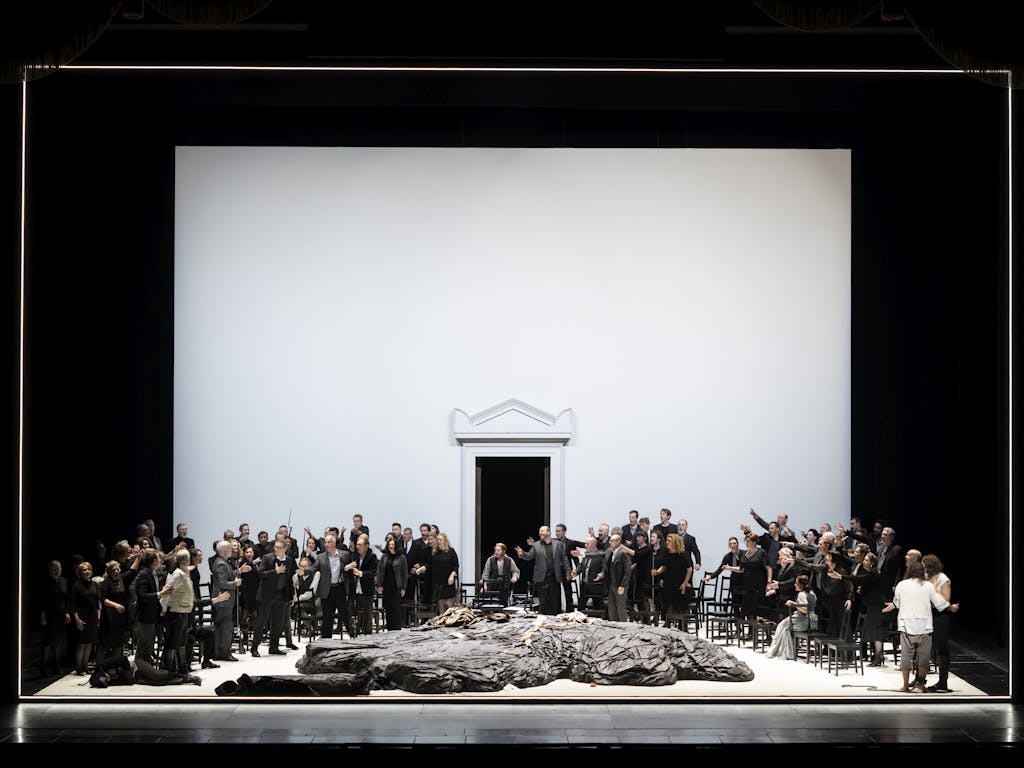
You can watch the production as well as behind-the-scenes insights, interviews and introductions on Royal Ballet and Opera Stream.
